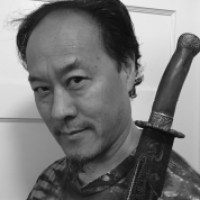The Best Korean Action Movies
If you’re new to Korea’s history of awesome action movies, here are some punch-ups to get you started.
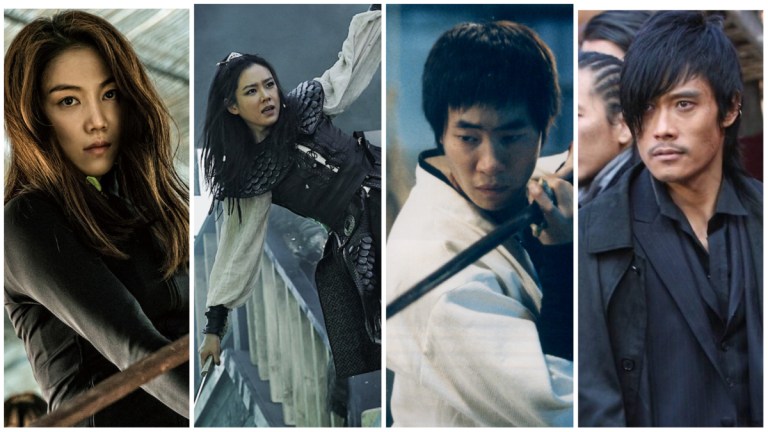
Korean filmmakers have produced some of today’s most cutting-edge movies by borrowing the best elements from Hollywood, Chinese, and Japanese cinema, and mixing them their own unique cultural vision. So when it comes to the action genre, K-films are all over the map. K-actioners range from irreverent comedies to gritty brutal ultraviolence. Story arcs move from funny to savage in the blink of an eye.
Always well-crafted, Korean action films are filled with clever plot twists, refreshing characters that are fully fleshed out, and superb cinematography, However, Korean cinema tends to defy being as easily pigeonholed into genre boxes as Western contemporaries.
For example, Park Chan-wook’s disturbing Cannes winner, Oldboy, is more of psychological thriller than an action film, and yet the brilliant one-er hallway hammer fight is consistently referenced as one of the top examples of fight choreography from that year. Snowpiercer, which spawned a TNT series, is also more of a sci-fi fantasy and political parody. Nonetheless, that Bong Joon-ho film delivers some top-notch action. With this in mind, Den of Geek’s list of standout examples of Korean action focuses upon some lesser-known films you might have missed.
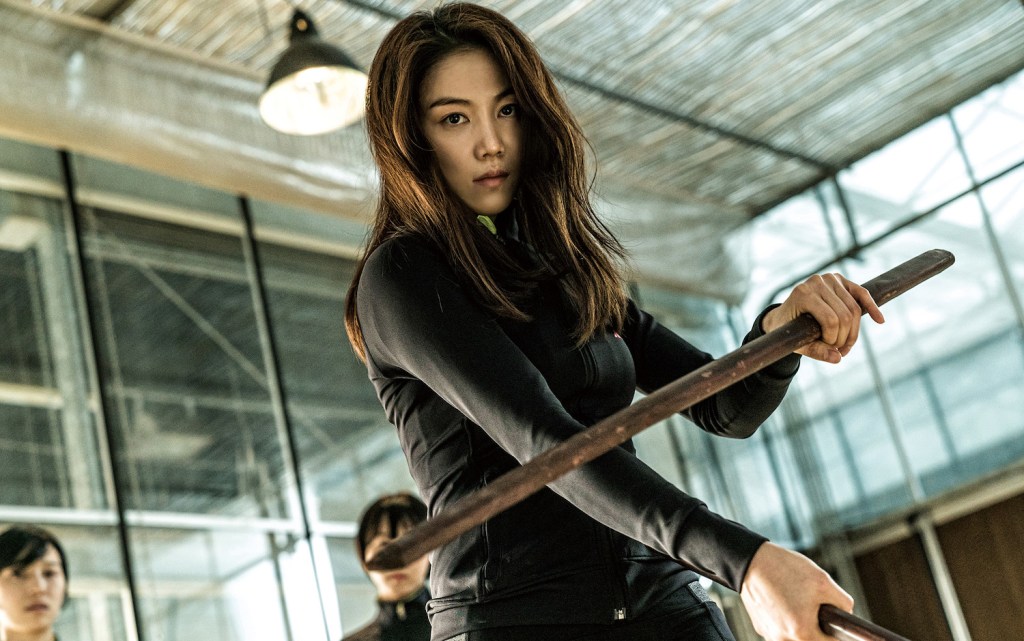
The Villainess (2017)
A femme fatale assassin tale in the tradition of La Femme Nikita, The Villainess takes ultraviolence to a whole new level. It opens with a gripping first-person perspective hit that plays out like a shooter game, and then moves into a complex story of Sook-hee (Kim Ok-vin), moving back and forth through time to her surreal training as an assassin and the transformation of her identity.
Whenever the action gets rolling in this film, hold on for a wild ride. The motorcycle sword fight in a tunnel was so influential that it inspired an homage in John Wick Chapter 3: Parabellum, but the mind-blowing cinematography of The Villainess remains unmatched. And as films go, The Villainess is very wet. When it isn’t raining, it’s showered in arterial sprays, as well as the pitter patter of gurgling blood. So weird, so wild, and so cool. If there’s only one Korean action film in your queue, it should be The Villainess.
Netflix recently released director Jung Byung-gil’s film Carter, which is an interesting actioner, but it doesn’t even approach the level of brilliance that The Villainess achieves. Jung is now working on his first Hollywood film, Afterburn, with Gerard Butler. A TV series based on The Villainess is also in development for Amazon Prime.
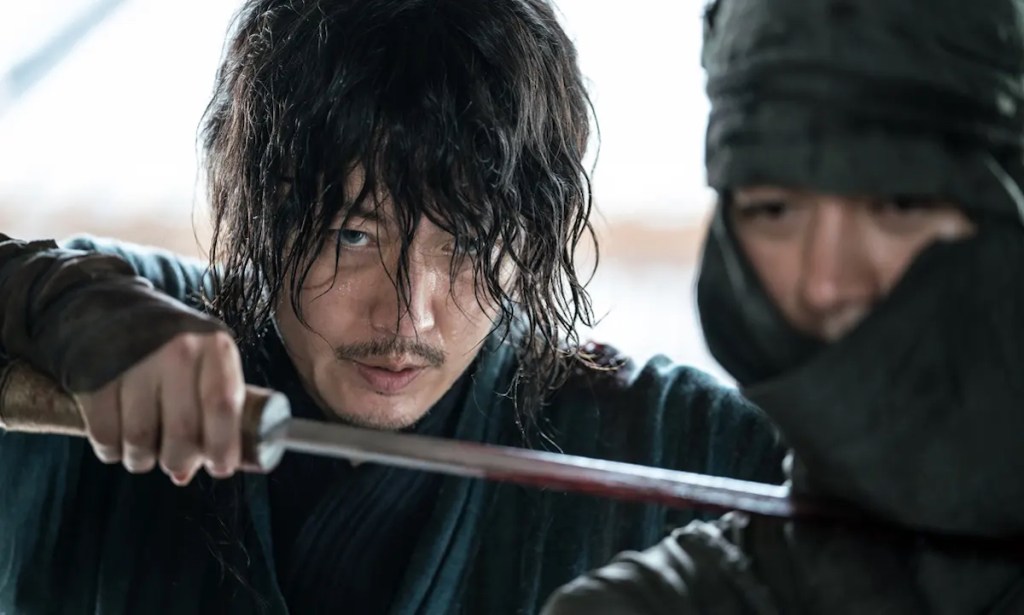
The Swordsman (2021)
The Swordsman is set in the Joseon period (1392–1897 C.E.) when Korea was being oppressed by the Qing dynasty. Tae-yul (Jang Hyuk) is a swordsman who is going blind, begging that age old question ‘Can I play with my sword until I need glasses?’ He lives as a recluse in the mountains with his daughter. Jang is a real-life Taekwondo and Jeet Kune Do practitioner, so he can deliver action well. He plays a stoic badass with his bangs covering his eyes, but he’s going blind so that’s fine.
Min Seung-ho (Man-sik Jeong), a senior rival swordsman, serves as good counterpoint to Tae-yul as an older, more reserved sword master, trying to do right in a decaying world. And the smarmy Manchu villain, Gurutai is played by none other than the always magnetic Joe Taslim (Warrior, Mortal Kombat). Joe is another genuine martial arts master with good acting chops, although he mostly plays one note here: a cocky grinning villain which he seems to relish. He only displays a bit more acting range when the finale fight starts to turn against him.
This film delivers a rich tale of intertwining intrigues, oppression, villainy, revenge, and honor, a battle to be the best sword in a selfish world that doesn’t give a rat’s ass about the “way of the warrior.” The Joseon period is well-depicted, with Korea at the crossroads between China and Japan. Whenever blades are drawn, the fight choreography explodes with swirling camerawork and complicated exchanges, including one decent one-er when Tae-yul cuts down a line of riflemen.
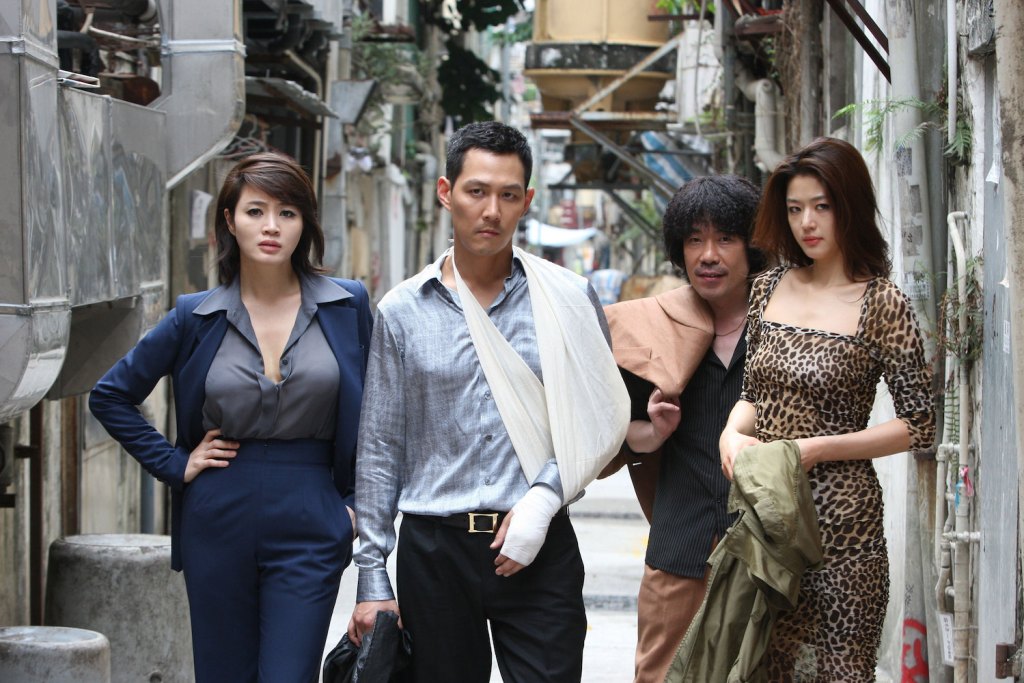
The Thieves (2012)
The Thieves is a good starter flick for Korean action cinema. It’s not extreme or overly graphic (just one bloody splatter), but it retains that Korean fascination with architecture, visionary cinematography, and engaging pacing. It’s funny, tragic, sexy, charming, even romantic, and at over two hours of running time (typical for Korean movies), it’s thoroughly entertaining.
A heist film, obviously, it stars Hong Kong legend Simon Yam, who is often dubbed as China’s Michael Caine, but that’s totally unfair to both actors. Like Caine, Yam has taken on a wide variety of roles from A-list to C-grade and delivered so many richly defined characters, all with that cool suave style that is uniquely his own. But Yam and Caine are both distinctive actors with a repertoire that demands their individuality.
Yam fronts an ensemble Korean cast, who quickly rise up to his performance bar to become thoroughly engaging characters. It’s a tale all about double-crossing and back histories, and in the end, despite some nasty betrayals, there is still some honor among thieves. With a complicated intertwined tangle of story arcs, there’s some great rappelling fights, impressive stunts, and fire fights. Ocean’s Eleven ain’t got nothing on this film.
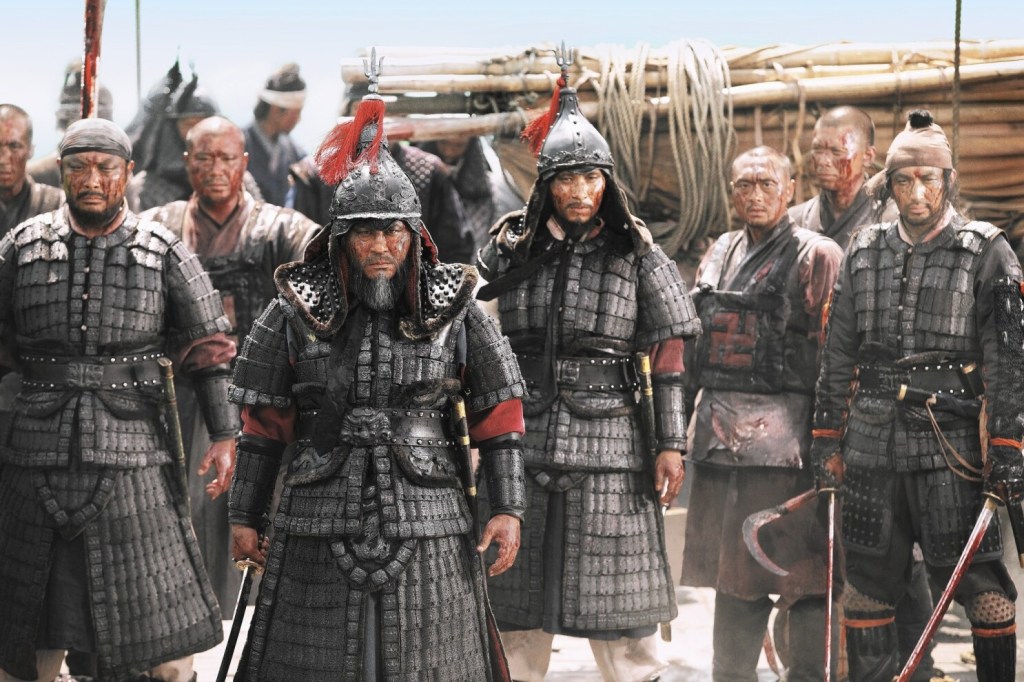
The Admiral: Roaring Currents (2014)
The Admiral: Roaring Currents currently holds the honor of being the most watched and highest-grossing film of all time in South Korea. It’s loosely based upon the historical naval Battle of Myeongnyang (1597 C.E.) when about a dozen Korean boats fought off some 300 Japanese invading ships. It’s glorious and extremely violent, soaked in sea water and blood.
A broken admiral named Yi Sun-sin (Choi Min-sik) must rally some beaten ships to fight against boatloads of samurai, ninjas, and pirates. He’s backed by doubtful captains, fearful sailors, weak villagers, and some kickass Buddhist monks. After nearly an hour of setup, the rest of the film is a deluge of colossal sea battles. It’s spectacular violence too, with plenty of decapitations, cannon fire, archers, ship ramming, explosions, sword fights, and many satisfying ship deck melees.
A prequel came out last July, Hansan: Dragon Rising, and it has already become Korea’s second highest grossing film of 2022. A three-quel called Noryang: The Sea of Death is set to begin production soon.
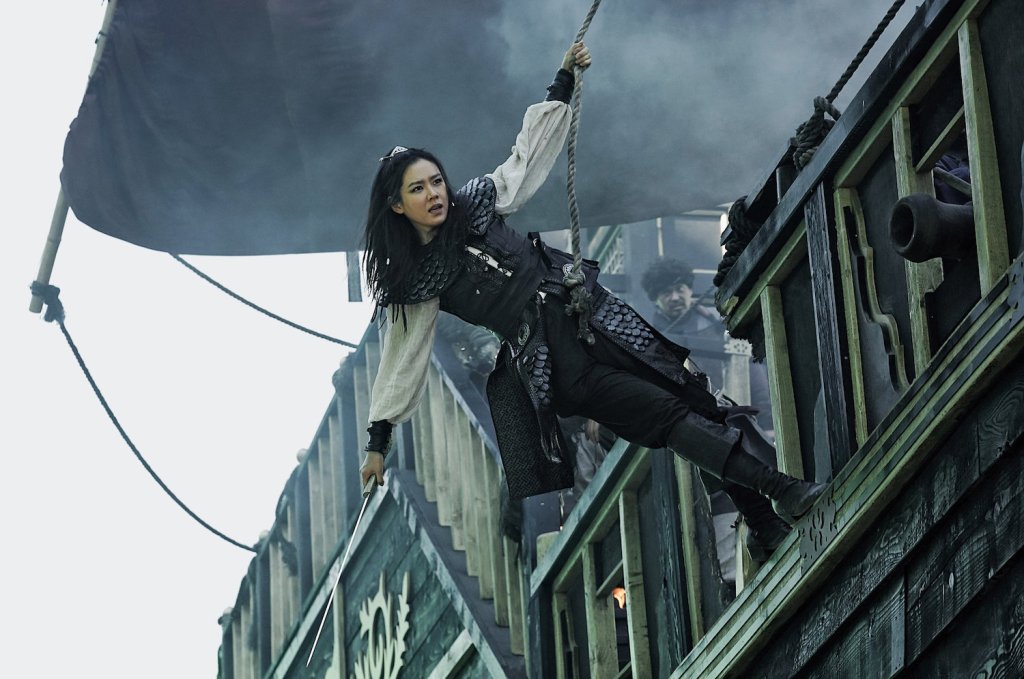
The Pirates (2014)
This delightful Korean film is a great romp and a fine example of entertaining K-flicks. It’s Pirates of the Caribbean meets Moby Dick and Whale Rider. A whale swallows an imperial seal, gifted to Korea by the Chinese emperor, and the film follows the quest to recover it. Some mountain bandits take on the roles of pirates only to discover that they aren’t the least bit seaworthy. There’s some cheesy CGI, some totally comic book characters (stand out is the always hilarious Yoo Hae-jin as Chul Bong), a gorgeous sword hottie pirate captain (Son Ye-jin as Yeo-wol), lots of eye patches and scars, battles at sea, and a ton of fun sword fights. It’s two hours of constant entertainment: an action adventure, a comedy, and a romance. It’s a little bloody but family-friendly for the most part, and like good K-flicks, it makes some sharp surprising turns that keep the plot moving along nicely.
A thematic sequel titled The Pirates: The Last Royal Treasure was released early this year. It’s a standalone story that revisits many of the elements of the previous film (female pirate leader, bandits versus pirates, recovering lost imperial treasure), but while still enjoyable it lacks the punch of the original. The Pirates: The Last Royal Treasure was also one of many films that got their premiere shuffled due to the pandemic, which surely affected its box office results.
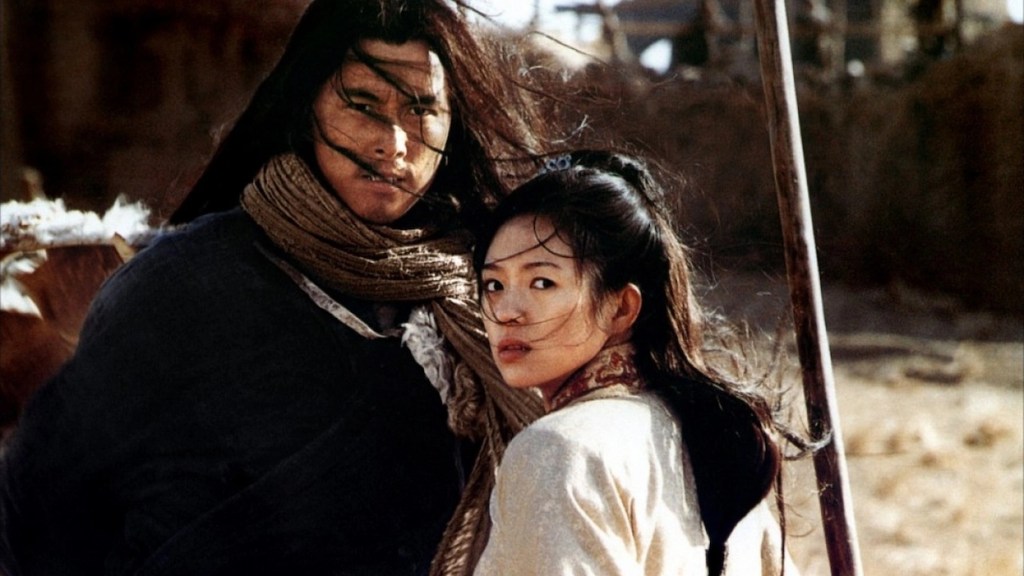
Musa (2001)
For many Western viewers, Musa was the actioner that opened the door to Korea. Also titled Warrior, it is a fictionalized retelling an actual historical event about a Korean diplomatic mission to China in 1375 C.E., just prior to the Joseon period. A true epic of a film, Musa was praised for its historical authenticity in the costumes, props, and sets, plus most remarkably, the languages. Unlike most every film that defaults to the language of the filmmakers, every character speaks their native tongue throughout the film.
Musa stars one of Korea’s top leading men, Jung Woo-sung as slave warrior Yeo-sol, as well as China’s Zhang Ziyi as the kidnapped princess Bu-yong and Yu Ronggang as the Mongolian general Rambulwha. The Korean version was nearly two hours long, but the international version was trimmed down to just above an hour and a half. It was additionally edited to remove some animal cruelty scenes that involved tripping horses.
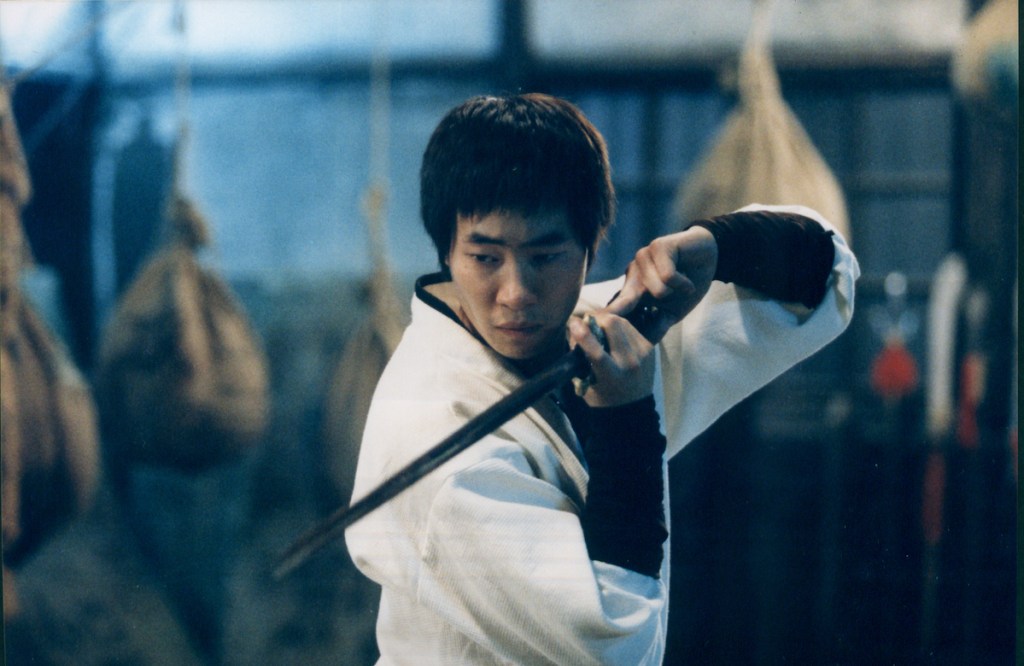
Arahan (2004)
Arahan is an irreverent action comedy in the same vein as Stephen Chow’s unique brand of film comedy known as mo lei tau. It’s a spoof and homage to China’s wuxia genre and their special blend of sword and sorcery stories, most typified by films like Crouching Tiger Hidden Dragon and The Forbidden Kingdom. Set in modern times, Sang-hwan (Ryoo Seung-bum) is a rookie cop who gets rescued by gorgeous warrior Eui-jin (Yoon So-yi). She takes him to her Daoist masters who determine that he might be “the chosen one.” Sure, it’s an old cliché, especially in fantasy films nowadays, but what it lacks in originality, it makes up with its charm.
Arahan is packed with cheesy special effects, ridiculous flying martial arts fights, and qi-power magic blasts. But there’s a tongue-in-cheek humor about the film. It’s quite self-aware of its own absurdities and indulges them, nevertheless. A fine showcase of Ryoo’s comic timing and charismatic acting, somehow it all works.
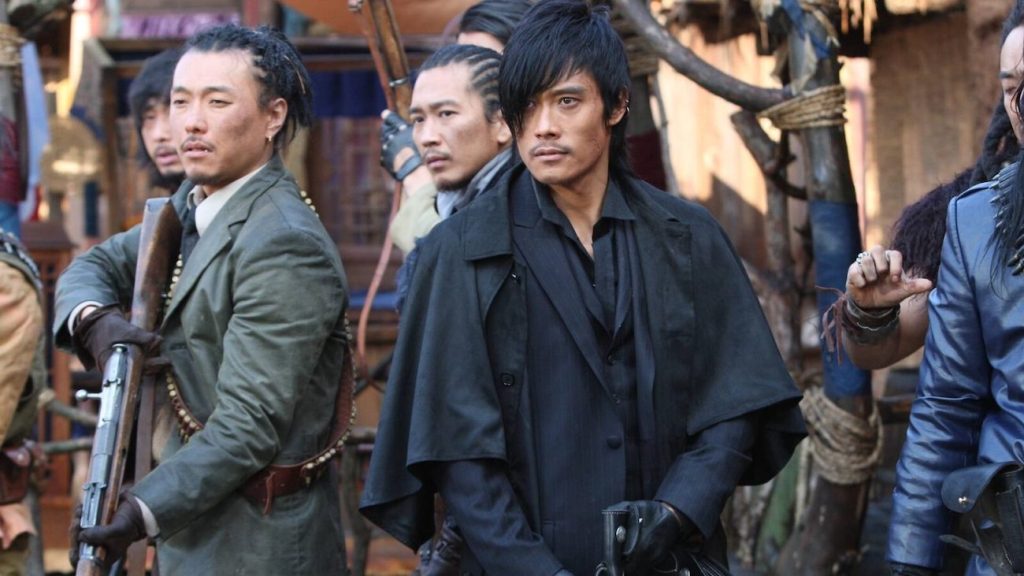
The Good, The Bad, the Weird (2008)
This is an oddball mashup of Korean period films and Westerns, inspired by the ultimate Spaghetti Western, Sergio Leone’s The Good, the Bad and the Ugly. But make no mistake, this is not a foreign redux or K-cultural appropriation. While the inspiration can be seen, this is something completely unique and which garnered high praise when it premiered at Cannes, mostly for its high impact action sequences. Set in Manchuria in 1939, it echoes The Good, the Bad and the Ugly as a trio of loners race each other to find a hidden treasure during a military conflict.
The Good, The Bad, the Weird stars three of Korea’s top leading men, Jung Woo-sung as the bounty hunter Park Do-won (the Good), Lee Byung-hun as the hitman Park Chang-yi (the Bad), and Song Kang-ho as the bandit Yoon Tae-goo (the Weird), and their rivalrous chemistry is palpable. It’s a rollicking violent quest where the action scenes completely redeem an overly convoluted plot.
As a humorous and considerably more violent homage, The Good, The Bad, the Weird ends in a three-man Mexican standoff finale fight like its original inspiration. However, unlike the definitive ending of The Good, the Bad and the Ugly, The Good, The Bad, the Weird had alternate endings. The Korean version is a little longer and has a somewhat happier ending, but the grimmer international version ending is allegedly closer to Director Kim Jee-woon’s vision.
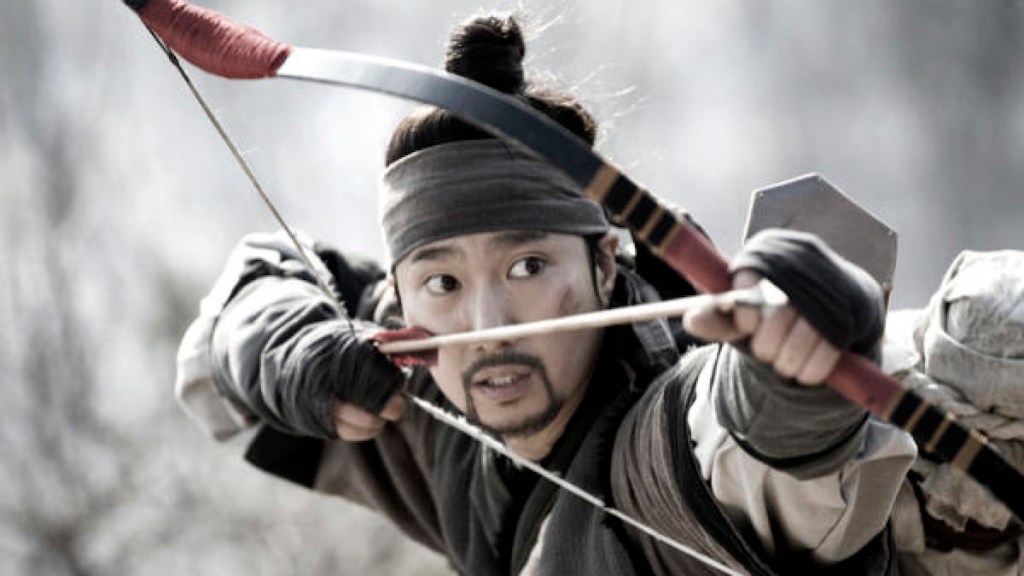
The War of Arrows (2011)
Koreans hold their archery with the same fetishistic reverence that Japanese have for their samurai swords. The Koreans still dominate in archery at international competitions like the Olympic games. The War of the Arrows is like a samurai-Kung Fu film mash up but with bows. It’s also enjoyable on every level—tight fight scenes, heroic bloodshed, evil Manchu villains, spectacular scenery, fine costumes, poetic justice, and some of the best bow and arrow fights ever.
Park Hae-il hits the bull’s eye with his portrayal of Choi Nam-yi, a master archer who must rescue his sister Choi Ja-in (Moon Chae-won) from the clutches of the evil Manchu. Both Park and Moon received Best Actor and Actress awards at several Asian film festivals and the film also garnered technical awards for cinematography and effects.
Trigger warning: The film contains an unsettling amount of animal violence. It’s done by CGI effects but still disturbing for anyone more accustomed to Hollywood’s “no animals were harmed” policy.
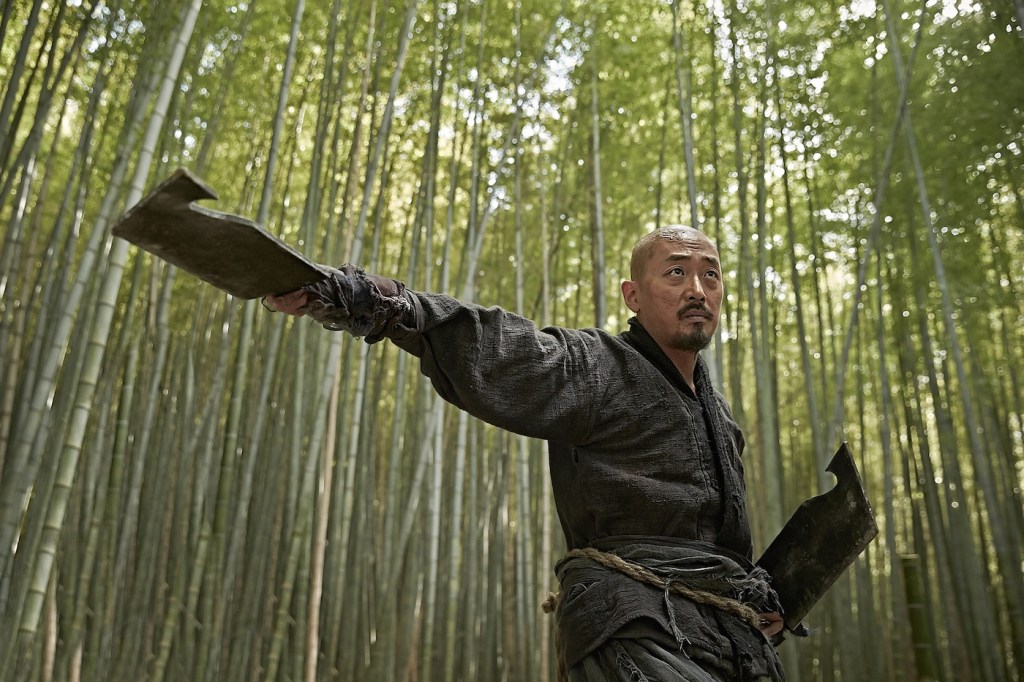
Kundo: Age of the Rampant (2014)
This is another tale from the Joseon period when tyrannical rulers oppressed the poor. A Robin-hood like band of thieves start a peasant rebellion. In fact, it’s so very Robin Hood that there’s a fighting monk like Friar Tuck (who conceals a blade in his walking stick), a maid Marian (who is a super kickass master archer), a Little John (who wields an absurd weapon, basically a shot-put on a cord for brutal ultraviolent bone bashing), and the main character, the butcher Doichi (Ha Jung-woo), uses double modified meat cleavers.
The fight choreography is fun and sanguineous, and the characters are well fleshed out, even the villain. Jo Yoon (Gang Dong-won) is the baddie, an unacknowledged noble because his mother was a concubine. He’s also a master swordsman, so there are plenty of great sword fights.
Kundo: Age of the Rampant is epically visual with big screen panoramic shots. And like most K-flicks, it takes the surprising turn now and again in the details, little scenes that feel fresh in their presentation. The dialogue is hilarious: K-flicks seldom drop so many F-bombs. The soundtrack echoes Spaghetti Westerns, but not so much Ennio Morricone. Rather there is just that twangy guitar style, which totally works for this film. It’s quite entertaining on many levels.
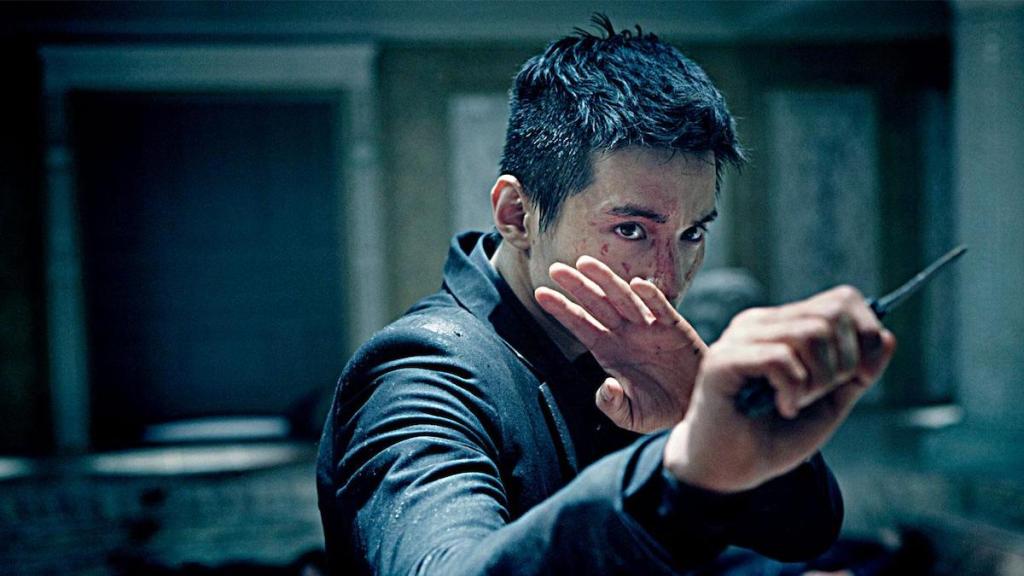
The Man from Nowhere (2010)
The Man from Nowhere is a gritty Korean modern urban-hell flick, and a sharp contrast to Korea’s many action comedies. A reclusive pawn broker, Cha Tae-sik (Won Bin), gets left with a bag of stolen opium when the movie starts. And as it turns out, he is really a broken ex-special forces operative (aren’t they all?) who retired after his pregnant wife was killed in a hit. He goes up against drug-dealing, organ-harvesting gangsters. At first, some of the fight scenes were done off-camera, which was annoying, but when they did erupt, wow, great stuff abounds: guns, knives, fisticuffs, broken glass, and arterial sprays.
It’s reminiscent of John Woo’s Hong Kong gangster classics with overly sappy melodramatic bits that are parsed by rapid fire scenes of intense brutal violence. And their hairdos are a bit much, but it’s redeemed by a great knife fight that is totally satisfying.
The Man from Nowhere was Won Bin’s final film after a successful career in film and television. He is a Taekwondo black belt and a UNICEF Goodwill Ambassador. The Man from Nowhere earned him several Best Actor awards from different Korean film festivals, but he is most remembered for his role as the intellectually disabled son accused of murder in Mother, which earned many accolades from critics when it premiered at Cannes.
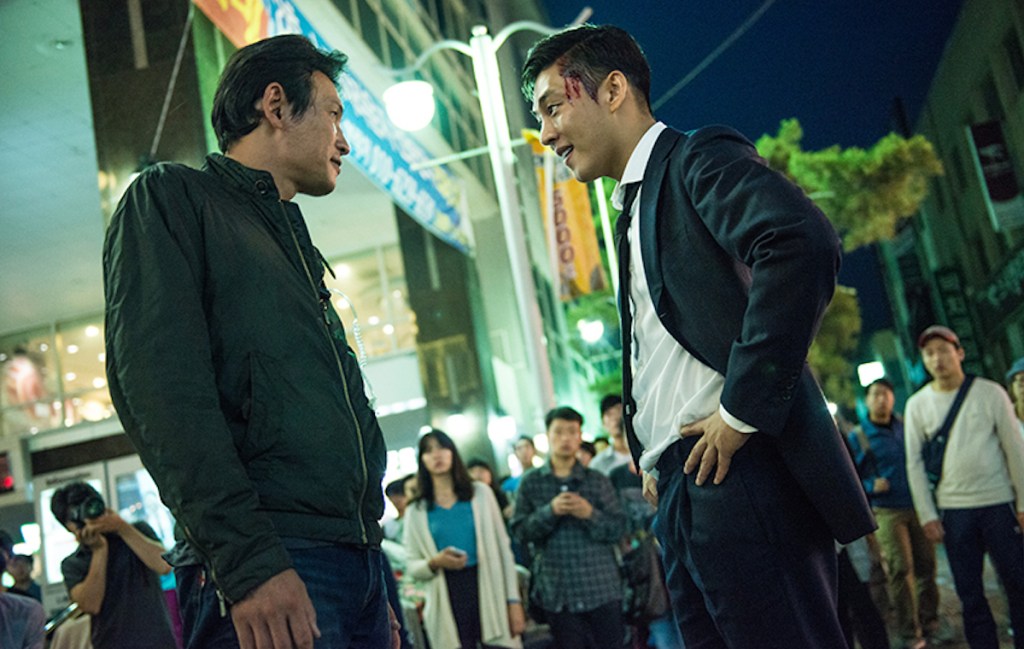
Veteran (2015)
An upstart detective named Seo Do-cheol (Hwang Jung-min) busts a car thieving ring, but then gets involved with the suspicious “suicide” of a blue collar truck driver in a union. Seo takes it all the way to the top where a rich entitled psychopathic brat of tycoon’s son named Joo Tae-oh (Yoo Ah-in) lies in wait. It’s the villain that makes this work, and Yoo steals the show with his utterly despicable portrayal. The against-all-odds detective fights his superiors (on the take of course) and his wife (although she, nor their kid, get kidnapped like one might expect) to bring down the brat. The coke-fueled finale car chase and fisticuffs totally deliver.
Yoo Hae-jin is also outstanding as the rich brat’s fixer, Choi Dae-woong. He usually plays whiny comedic roles given his long horse face, but here he delivers a layered performance as his character navigates being the diplomatic one for his loathsome boss. He’s great at what he does, always giving his roles such convincing life.
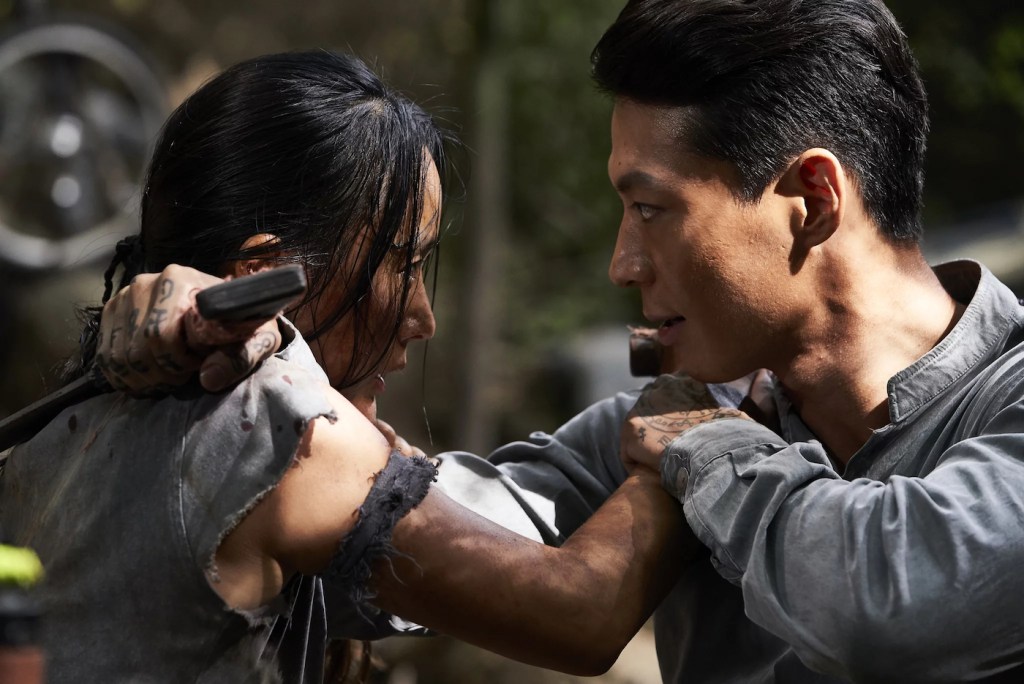
Revenger (2018)
It’s the first lead role for Bruce Khan, a real life Hapkido champion, stuntman, and expert in a variety of Korean martial arts. Khan wrote this tour de force to show off what amounts to a sanguineous gratuitous gritty extravaganza of ultraviolence with excellent fight choreography all the way through. Set on a tropical island prison where gangs hunt each other for sport, Revenger follows a stranger they call Yool (Khan) as he lands on the sand and starts kicking ass. He’s hell bent on revenge, thus the “revenger.”
That’s all you really need to know. It sets up a lot of fights in ramshackle warehouses with makeshift weapons. This is fight choreography porn. There are some excellent complex combat sequences, even a one-er hallway fight and lots of archery because it’s Korean. The penultimate finale fight is a major sword fight which is sharply executed, and the finale fight is even better, ramping up the action and brutality.
Revenger includes some funky comic relief side characters too: a goofy but cowardly gang leader with a hook for a hand, his zany henchmen, and his crazy grandfather, the healer. There’s just enough of that to keep the momentum flowing. There’s also a villainous hunchback wielding double machetes and a bevy of archer women. There’s even a cute kid with a dagger. Everyone’s backstory is told in predictable sepia flashbacks, but for connoisseurs of fight choreography, this action is not to be missed.
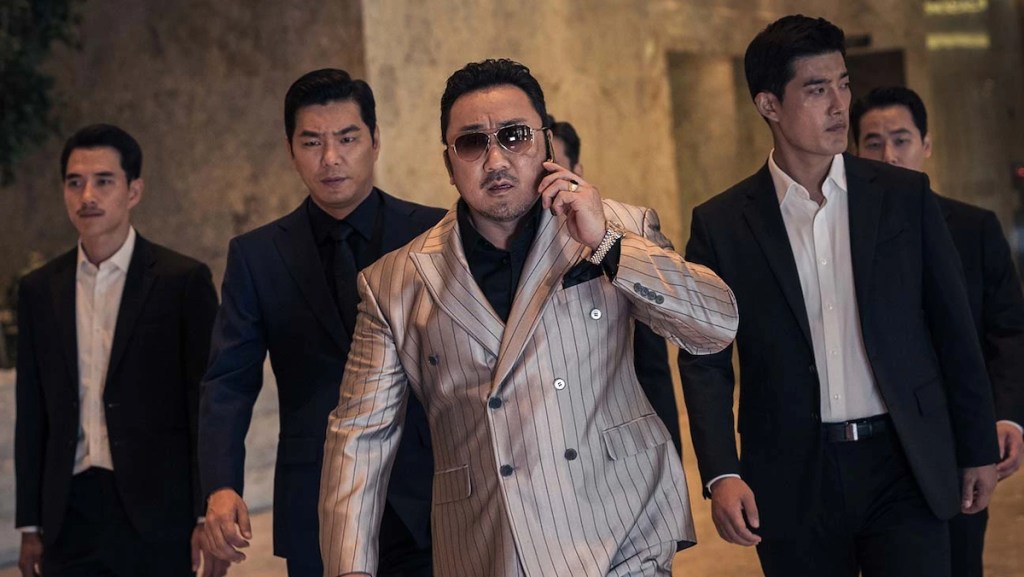
The Gangster, The Cop, The Devil (2019)
Another upstart cop Jung Tae-suk (Kim Mu-yeol) doggedly pursues a serial killer despite everyone denying it in The Gangster, The Cop, The Devil. Once again the villain steals the movie, which in this case means you need to keep an eye out for the gangster leader Jang Dong-soo, who is portrayed by Ma Dong-seok (but who has more recently taken the name of Don Lee). Westerners might recognize him for his role as Yoon Sang-hwa in Train to Busan (another actioner that’s also a horror flick). Ma is a big, thick, solid dude and carries that weight as authentic gravitas. He’s always one to watch.
After Jang gets attacked by the serial killer, he teams up with the upstart cop for an entertainingly awkward buddy flick. The cinematography is brilliant, and the neon and cigarettes lend a noir feel to the procedural. There’s some humor also in the characters’ whiny complaints, like so many K-flicks, and as always, exquisitely choreographed ultraviolence.
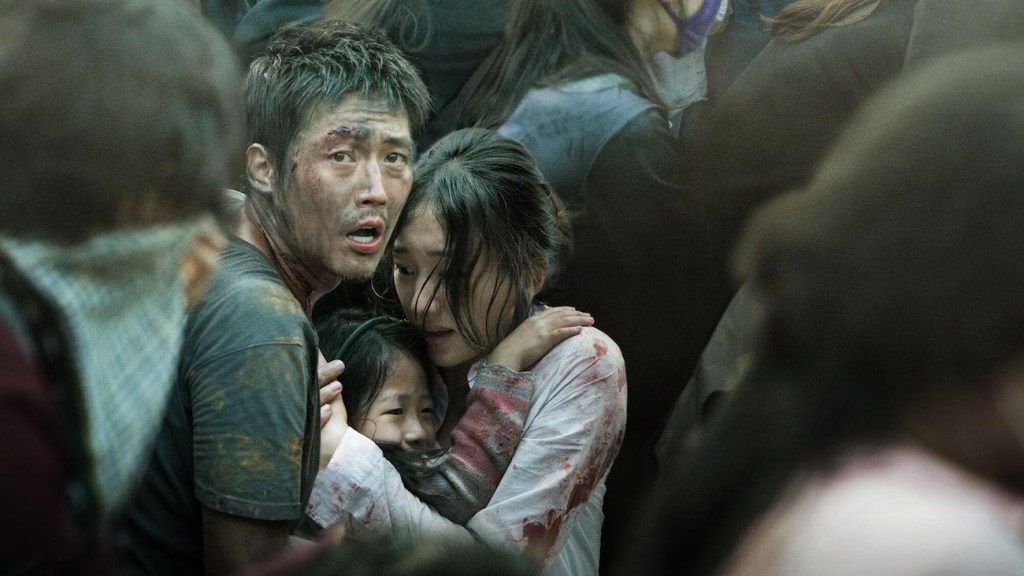
Flu (2013)
The last thing we want to watch now is a pandemic disaster film because we’ve been living in one for the past few years. Nevertheless, this came out more than a half decade prior to COVID. And while simplistic, The Flu hits some eerie predictive notes. The real pandemic has been more of a slow burn whilst this movie plague is a sudden apocalyptic catastrophe. A bird flu variant that incubates almost instantly causes a cough and fever, followed soon after by lesions and bloody vomiting, and then death. Bodies quickly start filling the streets. There’s a militant quarantine, replete with unsympathetic soldiers who casually shoot innocent civilians when ordered to do so and cover up a massive scandalous operation that’s as big as a stadium. And of course, it all comes down to one person with the antibodies. If only defeating a virus was that simple.
This film stars two actors mentioned in earlier reviews: Don Lee (Ma Dong-seok) traitorous infected Jeon Gook-hwan, and Yoo Hai-jin as the comic relief emergency rescuer Bae Kyung-ub. There’s also a stubborn U.S. general (Wayne W. Clark) who wants to bomb the quarantined. He has a British accent, which totally spoils it for English-speaking audiences. Asia has been wearing masks for colds and allergies since before pandemics were such a threat. Consequently, many of the cast have some cool clear masks with metal filters. Wonder if those were real or props?
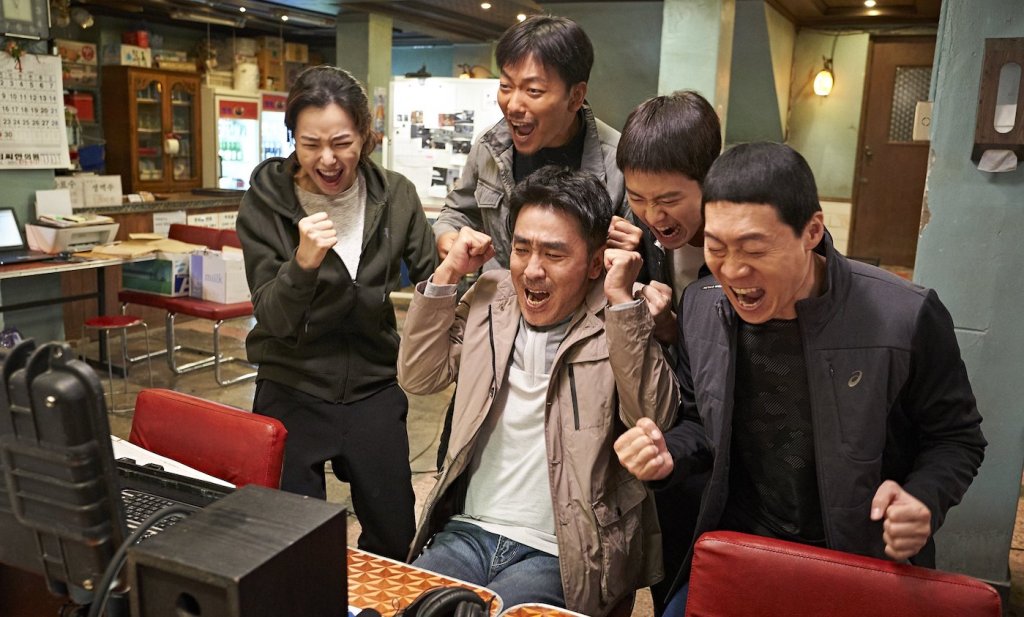
Extreme Job (2019)
Extreme Job is another K-police procedural with a translucent plot recipe. What makes this action comedy interesting is that it currently holds the title of South Korea’s biggest grossing film ever. A veteran squad leader who’s looking at his last big bust before retiring from a career of regret, a psycho-newbie who’s young, dumb and full of… feist, a kick ass hottie, a decent yet awkward cop who’s crushing on the hottie, and a tech guy. The squad gets sent on a snipe hunt that leads to a major bust. The twist here is that their undercover disguise is as a fried chicken joint, and the joint takes off and the cops are torn between catching the gang or cashing in on chicken.
It’s funny if you like K-humor, which can be a bit whiny and sarcastic. But it can work well with the right cast. Some of this humor translates; some of it falls flat. Then there’s the action. It’s teased throughout the film with odd random fights, which are few and far between. But in the final 15 minutes, it erupts into a very satisfying finale fight, making good on the promise of the cop hottie versus villainess fight, and delivering some solid action, albeit with a lot of comic elements. There’s a concluding joke about the squad leader’s nickname ‘zombie’ that sent this spiraling off the deep end, but it’s just played for laughs and is perhaps best left discarded.
